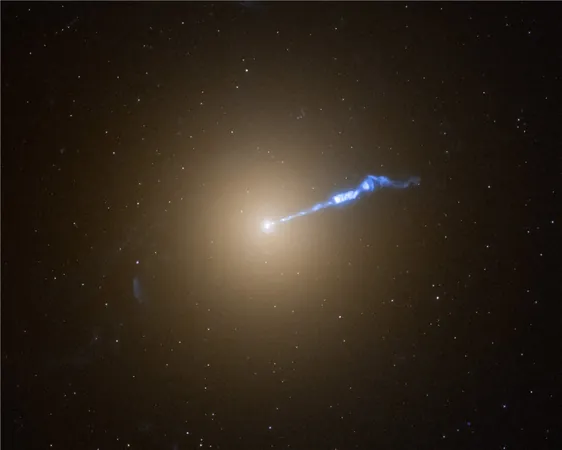
New Insights Reveal Asteroid Ryugu's Formation Region is Closer to Home Than We Thought!
2024-09-29
In a groundbreaking revelation for astrophysicists and space enthusiasts alike, recent studies of asteroid Ryugu have suggested that its birthplace may be far closer than previously assumed. The asteroid, which was visited by the Hayabusa 2 spacecraft, returned to Earth in December 2020 with precious samples that have since been under the microscope in laboratories worldwide, including the prestigious Max Planck Institute for Solar System Research.
While Ryugu, a near-Earth asteroid, poses no immediate collision threat, its geological origins have long fascinated scientists. Historically believed to have formed in the depths of the Solar System, potentially beyond Saturn's orbit, new analyses are shaking up our understanding of where this carbon-rich rock came from.
The Breakthrough Study
The latest research, led by a prominent team from Gottingen, focused on the metal isotopes within Ryugu's samples, specifically the ratios of nickel isotopes. The study conclusively linked Ryugu to the CI chondrites, a rare group of carbon-rich meteorites that share a striking resemblance to the Sun's chemical composition. Unlike traditional models that posited these meteorites were remnants from the outer Solar System, the findings imply a more localized origin, possibly within the influence of Jupiter's formidable gravitational pull.
What's Really Behind CI Chondrites?
Till now, scientists categorically described CI chondrites as a blend of three primary components: fine-grained rocks, rounded inclusions, and smaller irregular fragments. This traditional view has now encountered a paradigm shift, courtesy of new evidence suggesting the presence of a fourth ingredient: tiny iron-nickel grains that were abundant during the formation of Ryugu and CI chondrites. According to Fridolin Spitzer from MPS, "Completely different processes must have been at work in the formation of Ryugu and the CI chondrites compared to other carbonaceous chondrites."
This means that rather than being distant relatives of the Solar System's outer edges, CI chondrites formed much closer to Jupiter, influenced by the planet's powerful gravitational influence that altered the dynamics of material accumulation.
A New Era in Solar System Research
Importantly, this study not only redefines our understanding of Ryugu's origins but could also have profound implications for the overall narrative of Solar System formation. "We had to completely rethink not only Ryugu's origin but also that of all CI chondrites," remarked Dr. Christoph Burkhard from MPS, demonstrating how this research continues to reshape our cosmic story.
What Lies Ahead?
As we continue to unravel the mysteries of asteroids like Ryugu, scientists are poised to make even more discoveries about the early Solar System, astrobiology, and the potential for life beyond Earth. The implications of this research stretch beyond the scientific community, echoing in public fascination with space exploration and the ages-old quest to understand where we come from.
Keep your telescopes ready—who knows what other secrets our celestial neighbors hold!





 Brasil (PT)
Brasil (PT)
 Canada (EN)
Canada (EN)
 Chile (ES)
Chile (ES)
 España (ES)
España (ES)
 France (FR)
France (FR)
 Hong Kong (EN)
Hong Kong (EN)
 Italia (IT)
Italia (IT)
 日本 (JA)
日本 (JA)
 Magyarország (HU)
Magyarország (HU)
 Norge (NO)
Norge (NO)
 Polska (PL)
Polska (PL)
 Schweiz (DE)
Schweiz (DE)
 Singapore (EN)
Singapore (EN)
 Sverige (SV)
Sverige (SV)
 Suomi (FI)
Suomi (FI)
 Türkiye (TR)
Türkiye (TR)